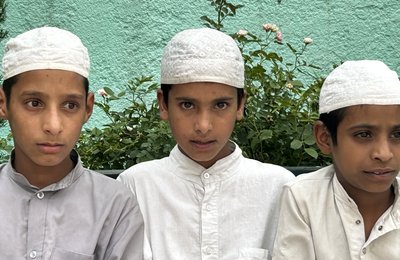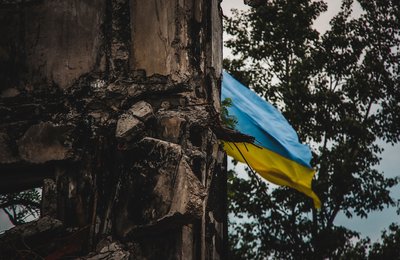 An air strike in Sana'a. Bridges, roads and other infrastructure have been destroyed across Yemen during the current conflict.
An air strike in Sana'a. Bridges, roads and other infrastructure have been destroyed across Yemen during the current conflict.
Following Yemen’s war from a distance is not like living it. Touching and feeling the agony and suffering of Yemenis, as well as hearing the airstrikes and visiting the areas targeted, is epic and dramatic. It is also full of blood, and the cries of those killed and injured. It is a dark portrait, with many destroyed schools, hospitals, bridges, and public infrastructure, destroyed for unclear reasons and a strategic vision that no one can understand or justify.
Travelling to Sana’a
The only airline operating is Yemenia. It runs very limited flights in and out the country, which are frequently suspended. This an ugly, proxy war, and most airports are closed. But I was lucky enough to get in before the current suspensions and make it to Sana’a International Airport, the only pair of lungs for 20 million Yemenis.
I had to wait for more than a month to catch my flight back to Sana’a, passing through Bisha in Saudi Arabia to undergo the famous security check, along with the elderly, sick, students and others who have been stranded across the world.
When I got to Sana’a, the destruction that the airstrikes have caused at the airport was clear. Civilian and military planes were lying, burnt and destroyed on the ground. Driving out, I was horrified by the sheer scale of the damage. Military and security buildings, schools, factories, traffic departments, gardens, TV and radio, and my poor city neighbourhood, which I finally reached.
At first, I had thought I was unlucky to live near Nuqum Mountain, east of the capital, as it has been suffering from almost daily airstrikes. But the reality is it does not matter where you live in Yemen. So many times, those ‘smart’ western guided missiles, rockets, planes and drones have somehow lost their way, and found themselves in neighbourhoods across the country. I wonder, as many Yemenis here joke about, if they will ever find and destroy the nuclear or other military facilities supposed to be hidden under this or that mountain or village.
Home
Most people neither know nor care about the war and its politics. They care about their lives, and finding food for their children. Although I been constantly amazed and terrified of the air strikes, which seem never to stop, those who have been here longer do not even look up any more. They are trying to lead their normal lives.
Shops, restaurants, schools, markets, students, and common hand labour are all attempting to do the same. The carpenter’s machinery is still loud and annoying. The sound of children playing fills the streets, regardless of the garbage everywhere.
On my way to my family’s home town, in Ibb Governorate, I heard, followed and saw the crazy, deadly airstrikes on MSF hospitals in Hajjah Province. It was not the first time MSF hospitals and clinics had been targeted. The images and reports of the civilians killed make me so angry and frustrated; the awful photos of workers burned to death by the airstrike on the Al-Aqel Kids Food Factory.
Yemenis taking care of Yemenis
The first day in my village it was quiet. We are in a rural midland area. The day after, I began to visit all the areas that have been targeted nearby. The airstrikes are targeting the personal houses of assumed leaders. But the houses in these ancient villages are so close to each other. One airstrike can destroy half a town. This is how the innocent die.
Rural areas, humble water projects, farms, public building and schools have all been targeted, again and again and again. I am starting to question UNICEF statistics about how many schools and universities have been destroyed. Villagers in the midlands told me they even targeted public gatherings, weddings and football matches, as happened in the famous Makha case, which HRW documented, and the Sanabani wedding party in Thamar.
Ibb Governorate is the quietest compared with other areas, which is why it has become a safe haven for hundreds of thousands of IDPs. I was so happy and glad when I heard about how my town and village has been receiving and welcoming IDPs from all over Yemen. Welcoming them, making them feel at home, and integrating them in society so quickly, based on real Yemeni values. I saw the same thing in Thamar Province. In both cases they do not even call them IDPs. They think of them as common Yemeni citizens and brothers, being guests first, then sharing and having common public duties and responsibilities like all.
Media ignorance?
Regardless of small religious differences, they all still pray in the same mosques. Many wonder if the propaganda games will win in the end. I hope not, because on the ground, things are different.
I was so happy to see the last remaining bridge in Wadi Bana still holding up. I thought it was the prayers of poor farmers as they depend on it for so many things, especially in the flood seasons and for medical emergencies. But the day after, a pilot must have received an order to destroy it. And he did. This bridge, other bridges, and all the roads in the area.
I can’t help thinking what will be achieved with such massive destruction in a country of already poor infrastructure. What do they hope to achieve by targeting civilians? I questioned all the international press, human rights and even UN reports, until I saw and lived it myself.
The only thing that gives me hope for tomorrow is when I wake up in the morning and open my windows, and see normal Yemenis walking and driving around. The towns and villages are full of energy, and a desire to live, to continue their daily lives regardless of the almost limitless obstacles in this humanitarian catastrophe. They are my real heroes in this portrait of war. I am proud to be in it, and to be one of them.


